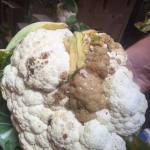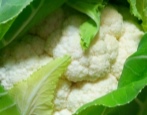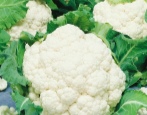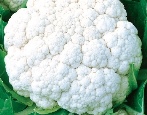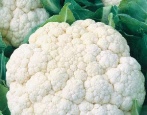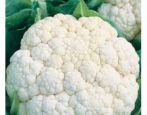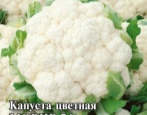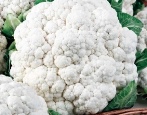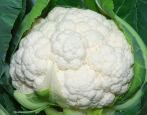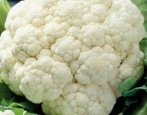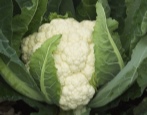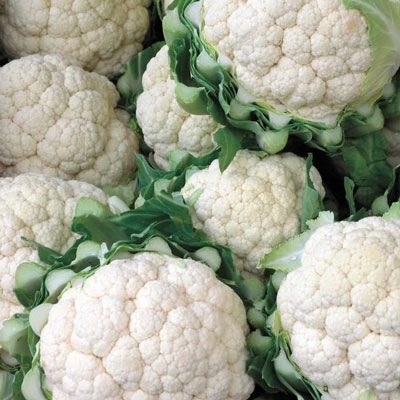
- Authors: Eike Kampe, Kononov A.N., Krasnikov L.G.
- Year of approval: 2007
- Appointment: for home cooking, for freezing, for canning, for fresh consumption
- Leaf rosette: upright
- Sheet length: middle length
- Leaf color: gray-green with a waxy bloom of medium intensity
- Sheet surface: slightly bubbly
- Edge of the sheet: wavy
- Yield: high
- Average yield: 3.1 kg / sq.m
The high level of ecological plasticity of this culture, its excellent health properties and relatively simple care have earned it respect and popularity among many domestic gardeners. We are talking about the cauliflower Goat Dereza.
Breeding history
The seed-growing company "Biotekhnika" was the originator of the culture. Among the authors of the variety are Eike Kampe, Kononov A.N. and Krasnikov L.G. The culture was included in the State Register in 2007.
Description of the variety
This cauliflower has a lot of advantages, but the main thing is that it is extremely rich in vitamins (U, A, C, D, E, K, H, PP, B) and trace elements. Of the trace elements necessary for the productive life of the body, the culture is generously provided with potassium, magnesium, calcium, iron and others. All this abundance is observed with an extremely low calorie content - about 30 kcal per 100 g.
A distinctive feature of Koza-Dereza cauliflower is the presence of biotin in it, which actively influences the healing of skin and nervous diseases. It is grown, as a rule, in open ground.
Characterization of the appearance of the plant and heads
The rosettes of the culture are compact, erect, consisting of 20-25 leaves. Leaves are powerful, medium in size, growing straight up. The color of the leaves is gray-green with a light waxy and bluish-gray bloom. The foliage surface is slightly bubbly, the edges are wavy.
The head is rounded, convex, dense, of medium size, weighing 0.8 kg. The degree of tuberosity is average. Inflorescences are white, tender, juicy, slightly crunchy. When cutting heads of cabbage, they practically do not crumble.
Purpose and taste
Cauliflower Goat Dereza is consumed fresh, canned, frozen, it fits perfectly into many dishes. It has excellent taste, and its puree is used for feeding babies.
Ripening terms
From the moment of emergence of seedlings from seeds to ripening, it takes about 100 days, and with the seedling method, before picking up the fruits - 50-70 days.
Yield
The crop is high-yielding - with an average yield of 3.1 kg / sq. m.
Growing and caring
For seedlings, seeds are sown from March 20 to April 10, in open soils - from April 20 to May 10. Landing scheme - 50x30 cm.
The culture is moisture-loving, does not tolerate droughts, stopping the growth process. But surplus irrigation is also undesirable for development. The plant prefers stable conditions. The optimum temperature for development is 16-18 ° C. In cooler conditions, the heads begin to shrink and lose flavor. At temperatures above 25 ° C, the bushes stop growing, and the inflorescences become loose.
The quality of the substrate for the variety is relevant, since the roots of the bushes are underdeveloped and are located superficially (at a depth of 25-40 cm). The crop prefers fertile, well-aerated, neutral or slightly acidic soil. Soil moisture should not penetrate to the edge of the soil closer than one meter.
The preparation of the beds begins in the fall with digging and cleaning the soil. At the same time, humus or compost (15-20 kg / m²), superphosphate and potassium sulfate (140-160 g and 100-120 g) are introduced. It is possible to replace additives with wood ash (0.8-1 l / m²).
Places for its landing are chosen open, well-lit, protected from drafts.
We recommend planting a crop after legumes, nightshades, pumpkin crops, as well as onions, garlic, carrots, greens, changing the landing sites every year.
In the spring, 14-21 days before the planned disembarkation, the beds are thoroughly loosened.
You can plant cabbage in open soil with both seeds and seedlings. The second method is more popular. Seedlings by the time of planting should reach 15-18 cm in height and have 4-5 true leaves.
The pre-planting preparation of seeds consists in keeping them in a damp tissue until the sprouts hatch. Useful use of biostimulants - "Epina", "Emistim-M", potassium humate and others. The final stage of preparation is seed dressing for 15 minutes in antifungal solutions "Fitosporin-M" or "Baktofit". This is followed by a rinsing and drying process.
We recommend growing seedlings in peat cups, having previously treated the substrate with sifted wood ash. One hour before disembarking, it should be moderately moistened. Seeds are planted in 3-4 pieces. into a glass, deepening them by 0.5-1 cm, sprinkling them with fine sand on top. The containers with seeds are covered with foil.
The temperature regime for growing is 20-22 ° C, and after germination - 8-10 ° C during the day, at night - up to 5-6 ° C. After 7 days, it is better to place the containers on a glazed loggia with a temperature of up to 13-16 ° C. With a lack of lighting, phytolamps are used. Irrigation should be done moderately and regularly.
Before planting in open soils, two additional dressings are made. The first - when the second true leaf appears, and the second - after two weeks. For this, a solution is used - per liter of water 2.5-3 g of nitrogen, 2 g of phosphorus and 1.5-2 g of potassium fertilizers. A week before planting, the seedlings are hardened.
Disembarkation is carried out on cloudy days. Following the recommended scheme, the landing grooves are prepared (10-12 cm deep), then abundantly spilling them with water. A little humus, a teaspoon of superphosphate and a little onion peel are placed at the bottom of the holes (to scare away pests). The bushes are deepened into the ground up to the first two cotyledon leaves. Then they are irrigated moderately. Until adaptation, they should be kept under a canopy or under paper hoods.
Irrigation is done in moderation (once every 5 days). The care is generally standard.
Top dressing of the culture is carried out 3-4 times a season. The first one - 14 days after disembarkation on the beds, and the subsequent ones - with a period of 12-14 days. In the early phase of growth, the crop needs nitrogen (10-15 g of nitrogenous fertilizer per 10 liters of water).
The second and subsequent additives should include phosphorus and potassium compounds - 25-30 g per 10 liters of water, superphosphate and potassium sulfate, alternating with complex additives ("Kristalin", "Novofert"). The culture needs boron and molybdenum. With their deficiency, it turns brown and crumbles. For this reason, a solution of 1-2 g of ammonium molybdate and boric acid per 1 liter of water should be used once every 30 days.
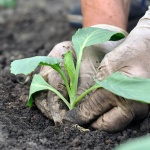
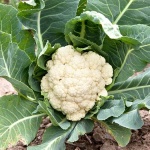
Disease and pest resistance
In general, the culture has good potential for resistance to disease and pest attacks.
The most dangerous are a number of pests.
Cabbage flies, against which Tanrek, Mospilan, Fufanon are used.
Caterpillars of scoops, against which purchased pheromone or homemade traps are used, as well as scaring ones - "Entobacterin", "Bitoxibacillin". Effectively affect the caterpillars with the help of "Actellik", "Fufanon" and others.
Cruciferous flea beetles effectively repel the smells of garlic and tomato tops, as well as a mixture of wood ash, tobacco chips and red pepper. In case of mass attacks of pests, the fight is carried out by "Trichlormetaphos", "Phosbecid".
Against the invasion of slugs, infusions of herbs and mustard powder have proven themselves well. Against mass invasions, the drugs "Groza" and "Slizneed" are used.
Cabbage aphids are scared away with infusions of herbs with a pronounced odor, spraying the culture every 10-12 days. Also used drugs "Biotlin", "Aktara", "Inta-Vir".
Culture can be exposed to:
mucous bacteriosis, which should be prevented by "Mikosan" or "Pentafag";
root rot, against which the best prevention is competent irrigation, as well as the introduction of capsules "Glyokladina" or "Trichodermina" into the soil;
alternaria, the best prevention of which is dusting with crushed chalk or spilling with "Planriz", "Baktofit";
fusarium, to combat which solutions "Fitosporin M" or "Fitolavina" are used.
